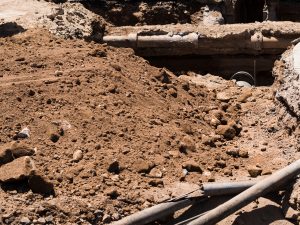Trenching near utilities in urban areas requires precision and care. If it’s not done correctly, it can lead to significant issues, including damage to vital services like gas and water. Understanding these challenges is a common concern for those responsible for urban improvements. Recognizing the risks involved means fewer disruptions and safer project completions.
These damages aren’t just minor inconveniences; they can lead to serious hazards, service interruptions, and unintended costs. However, with the right approach and technology, these risks can be effectively managed. Techniques such as vacuum truck services provide safer methods for handling these challenges. Accurate practices and technologies help in making these operations much less risky.
Identifying Utility Locations
Knowing exactly where underground utilities lie before digging starts is crucial. Visualizing trenches without hitting anything sounds simple enough, but it’s a key factor in preventing damage. Using advanced technology ensures utilities are identified accurately. This tech helps in precision digging, preventing unwanted clashes with underground pipelines or cables.
Here are important steps to consider for identifying utility locations:
– Planning: Before starting any digging, plan thoroughly. Gather all available records and maps of the site to see where utilities lay.
– Use of Detection Technology: Advanced tools such as ground-penetrating radar can detect underground utilities without breaking the surface.
– On-site Markings: Mark out utilities on the ground clearly, so there’s no confusion during the actual task.
Not identifying utilities properly can lead to severe consequences. A missed electric line could cause outages, or worse, injuries. Similarly, rupturing a gas line might mean evacuations and delays. These challenges underscore the importance of reliable detection methods in a project’s setup phase. Adopting accurate and effective technology protects everyone involved and keeps the job running smoothly.
Safe Trenching Techniques
When it comes to working near utilities, using non-destructive digging (NDD) methods ensures minimal disruption and safety. Instead of the traditional digging methods, NDD uses vacuum trucks, which are a significant improvement in this field. These trucks use advanced technology to excavate with precision, reducing the chances of hitting something unexpectedly.
Here are some key benefits of NDD:
– Precision: Vacuum trucks provide accurate results, making them ideal for areas with dense utility networks.
– Speed: The process is quicker than conventional methods, helping projects stay on schedule.
– Versatility: Suitable for a range of environments, from residential to commercial sites.
By investing in these techniques, you can avoid service disruptions. Imagine a busy market day in the heart of Perth suddenly losing power. That’s something you definitely want to prevent. Non-destructive digging helps keep essential services intact while work progresses smoothly.
Common Damage Risks
It’s easy to overlook common damage risks while trenching, but understanding them can save time and money. For instance, pipeline ruptures can cause extensive water damage. There’s also the risk of cutting through electric cables, which could lead to power outages and even pose safety hazards.
To mitigate these risks, consider these practices:
– Conduct thorough site assessments to plan out the trenching route.
– Regularly check the condition of equipment to ensure it’s up to the task.
– Train your team to recognize potential hazards early on.
One example of what can happen without these precautions involved a suburban area where workers accidentally severed a major water line. This not only interrupted water supply to homes but also led to costly repairs and a public relations issue for the contractors involved. Such incidents highlight why careful planning and the right techniques matter.
Ensuring Compliance and Safety
Compliance and safety can never be overlooked in trenching operations. Ensuring all local regulations are followed is fundamental for any project near utilities. Adhering to these standards helps protect both the workforce and the public, while also preserving the environment.
Safety protocols should include:
– Regular training sessions for teams to stay updated on safety practices.
– Use of state-of-the-art equipment to ensure precision and control.
– Ongoing communication with local authorities for necessary approvals and clearances.
By maintaining a strong focus on safety and compliance, projects can progress without unnecessary setbacks. Prioritising proper protocols creates a safer environment, fosters trust with clients, and ensures that your team is operating effectively.
Conclusion
Trenching near utilities in urban settings demands an attentive approach that combines modern technologies and skilled practices. From ensuring accurate utility detection to employing non-destructive digging techniques, these strategies significantly minimize dangers. With careful planning and the right equipment, potential damages and service interruptions are reduced, keeping everything running smoothly for both the community and businesses involved.
Adoption of such methods not only mitigates risks but also reinforces a commitment to safety and efficiency. While the challenges of trenching near utilities can seem overwhelming, embracing advanced solutions ensures that any project can be completed with the highest standards in mind. Safety, compliance, and accurate execution are key for successful urban trenching operations.
To keep your projects efficient and safe, understanding the benefits of innovative excavation methods is key. Discover how iVac WA’s vacuum truck services in Perth can support your next urban project with precision and reliability.

